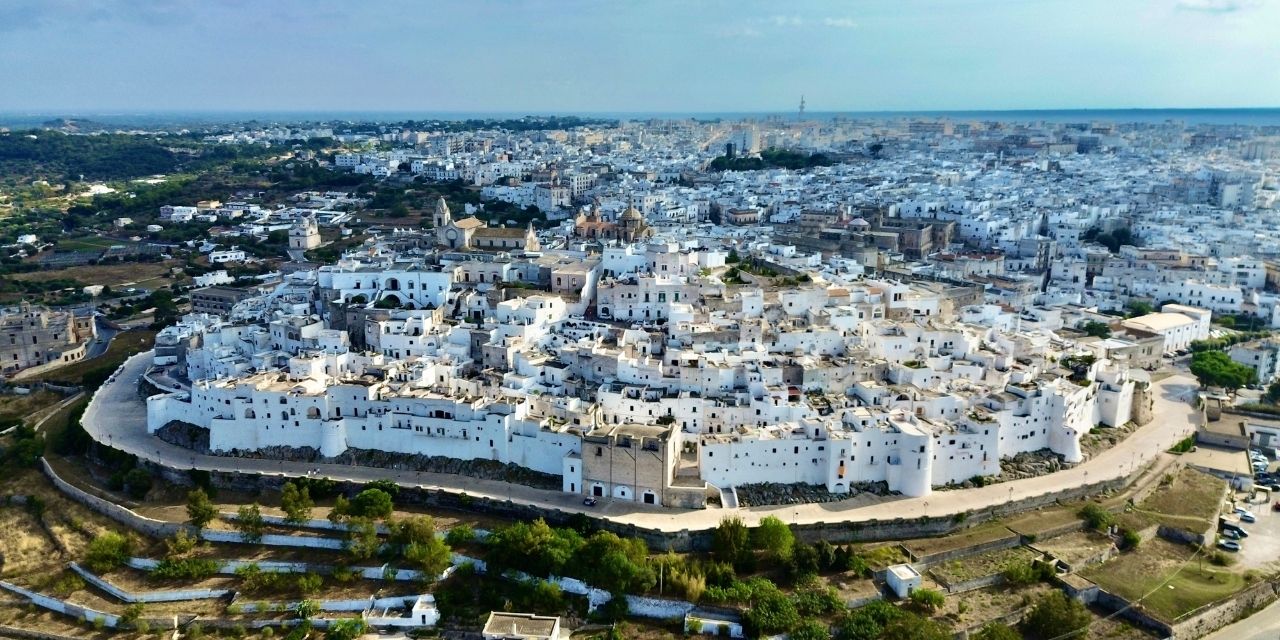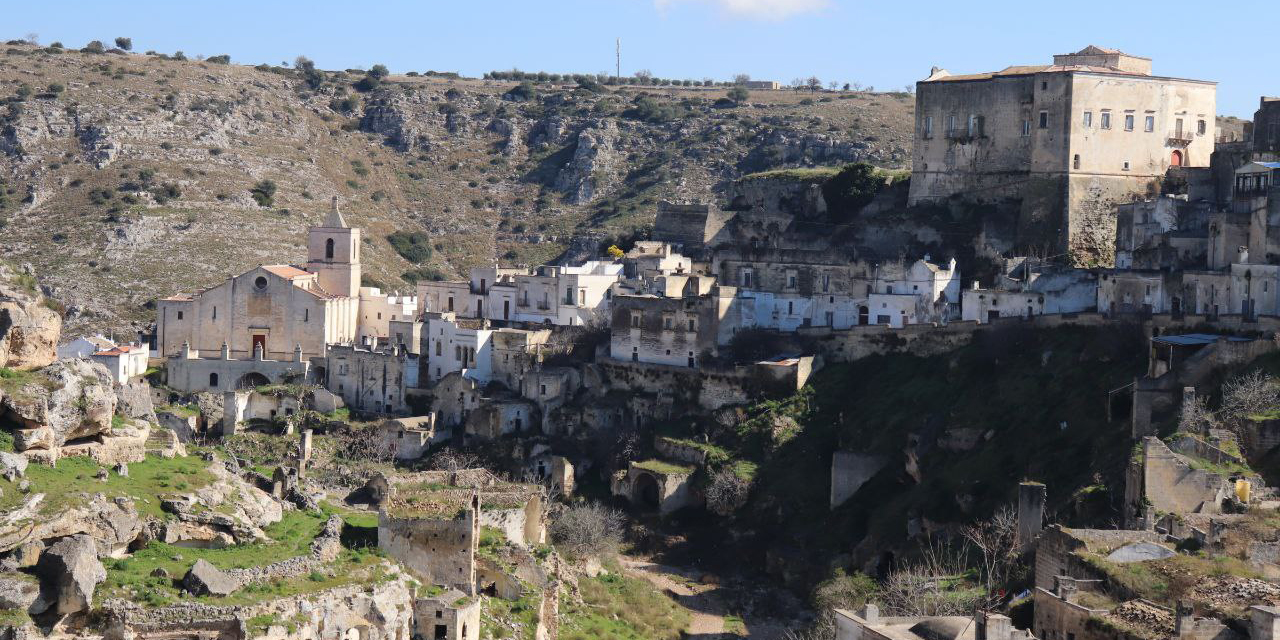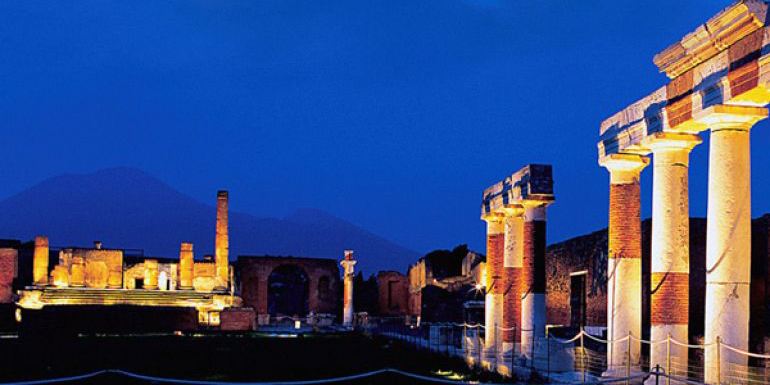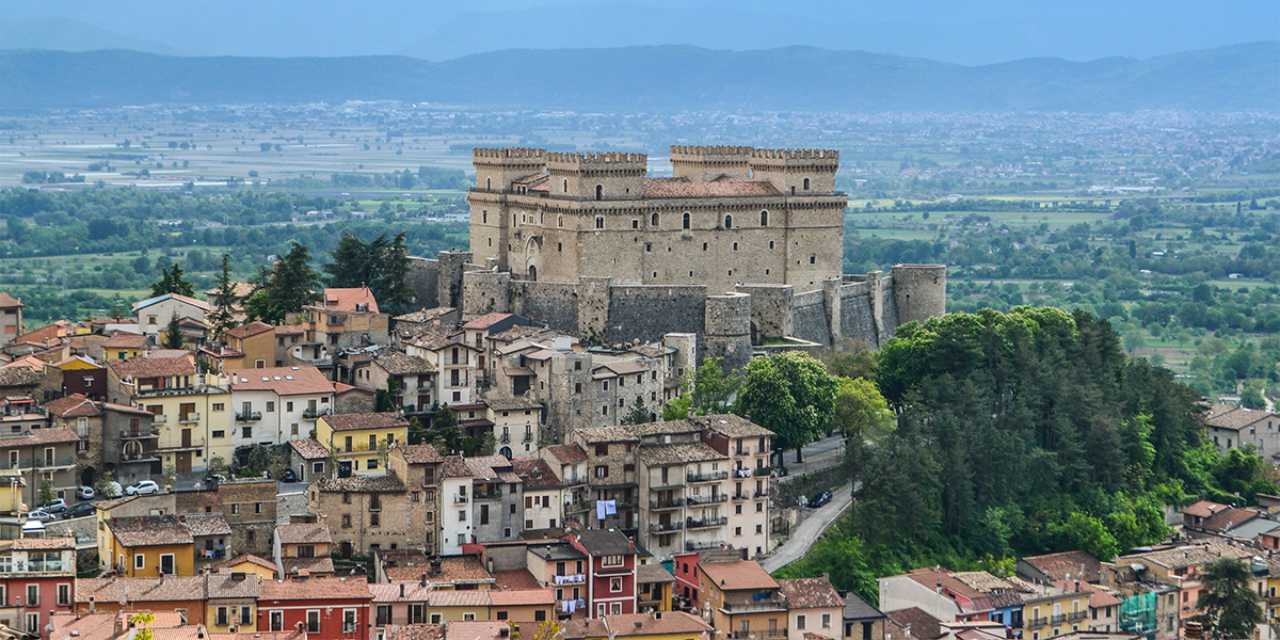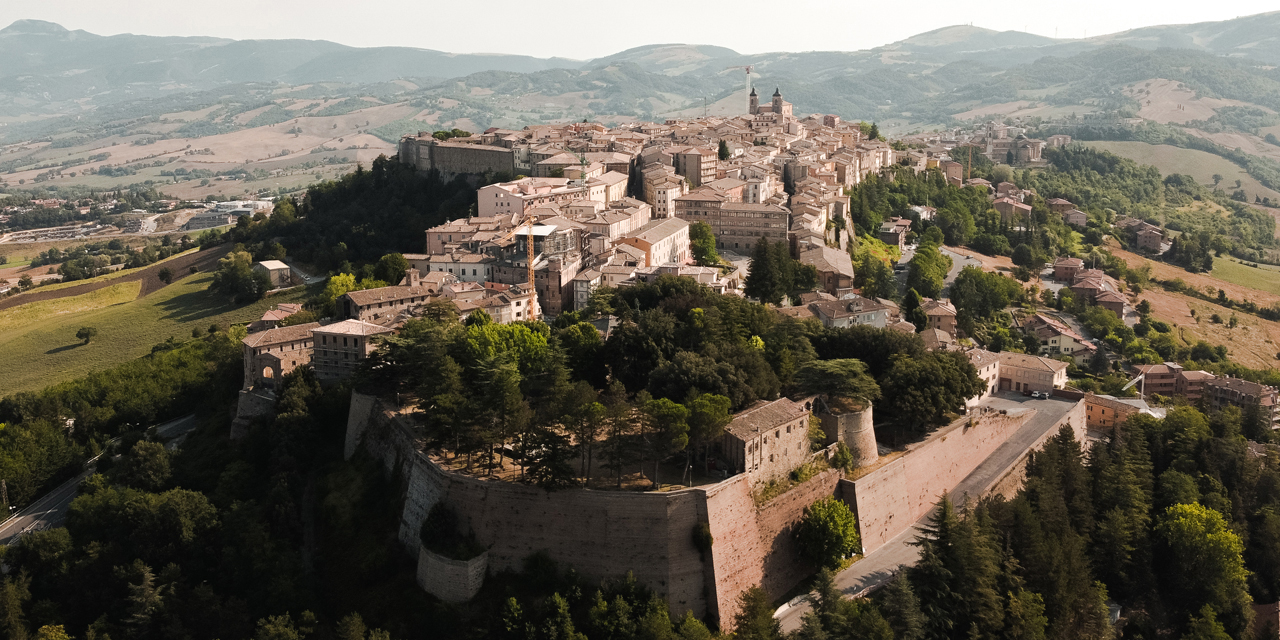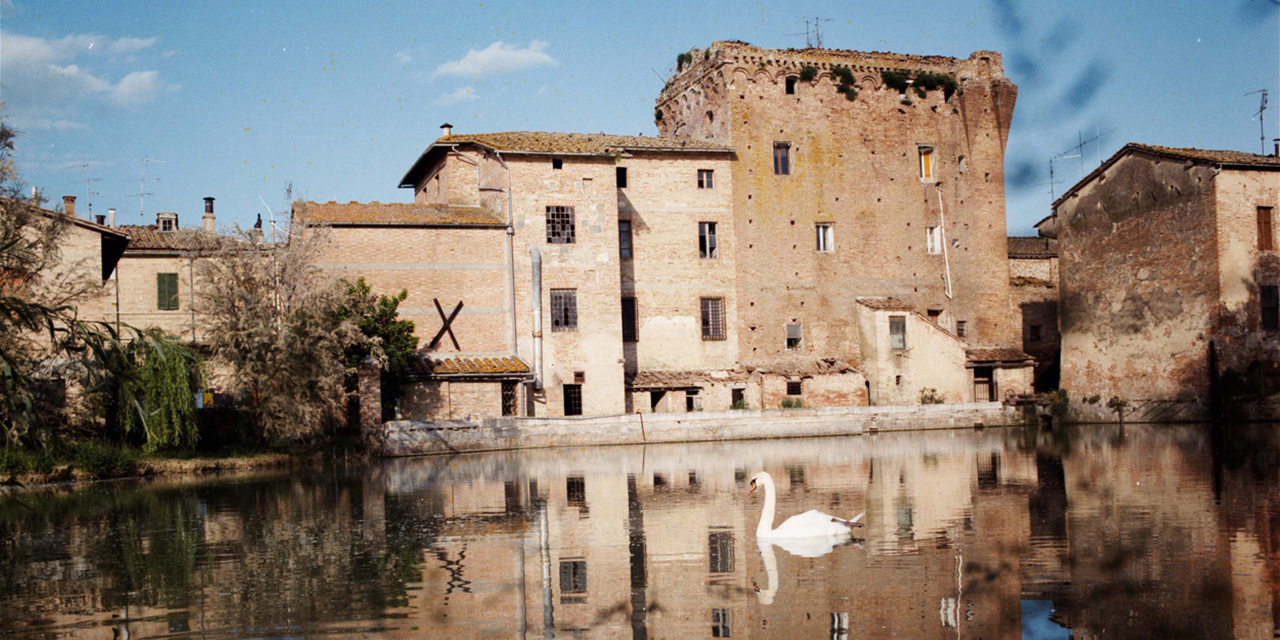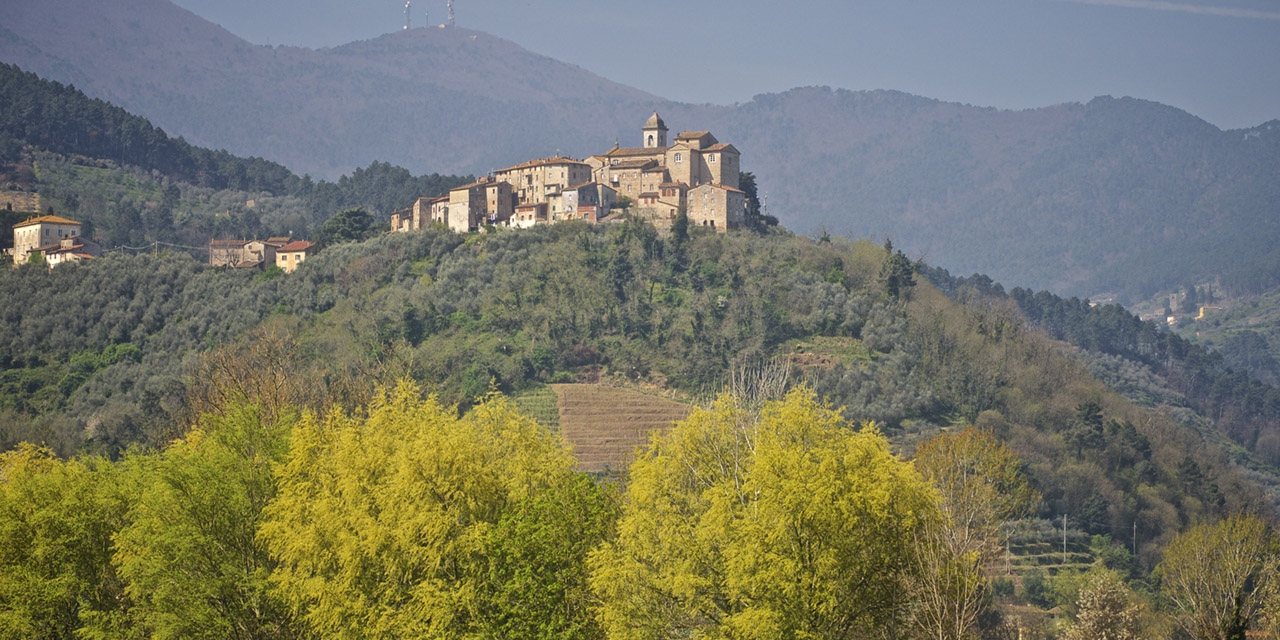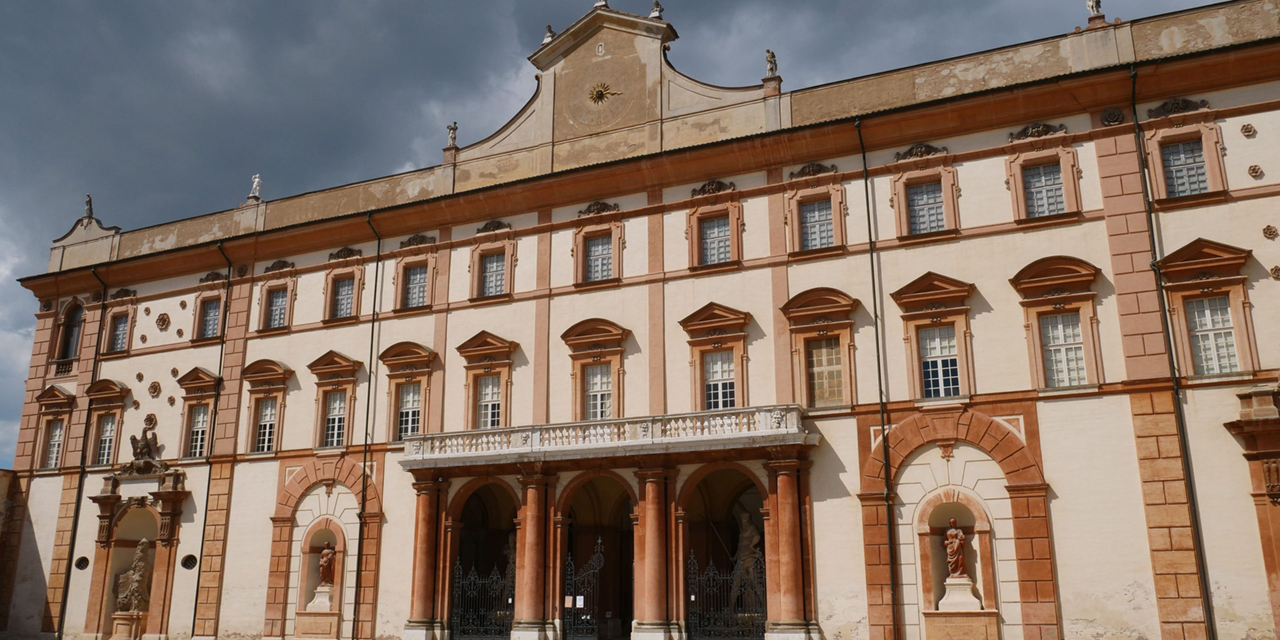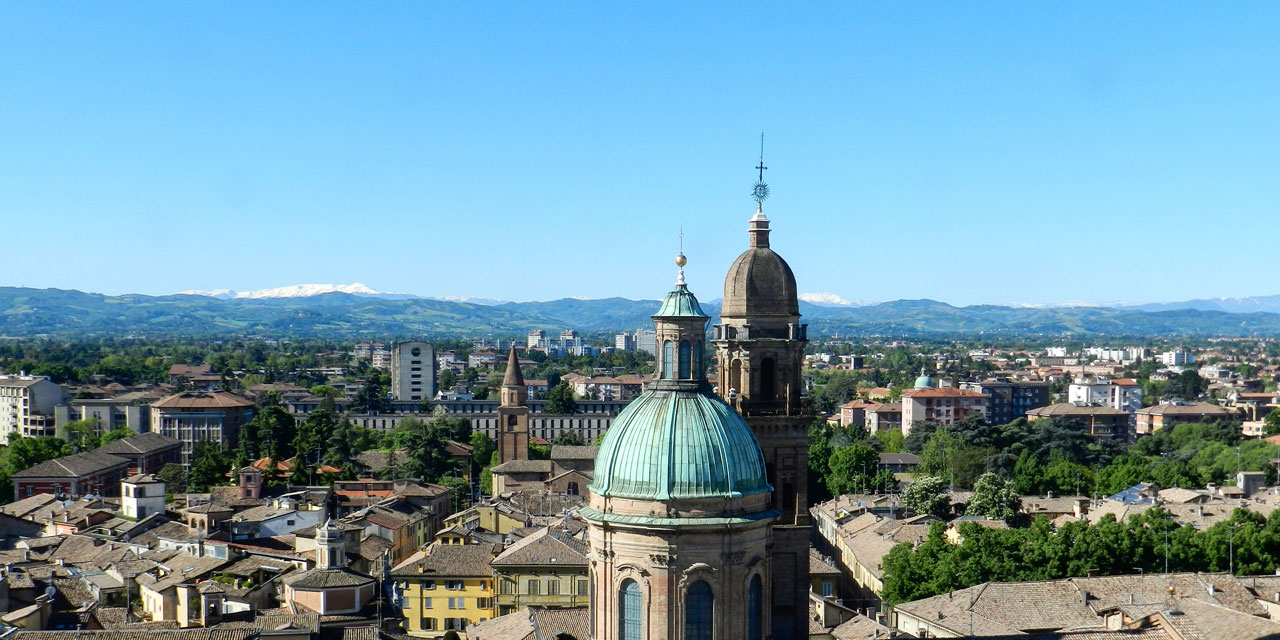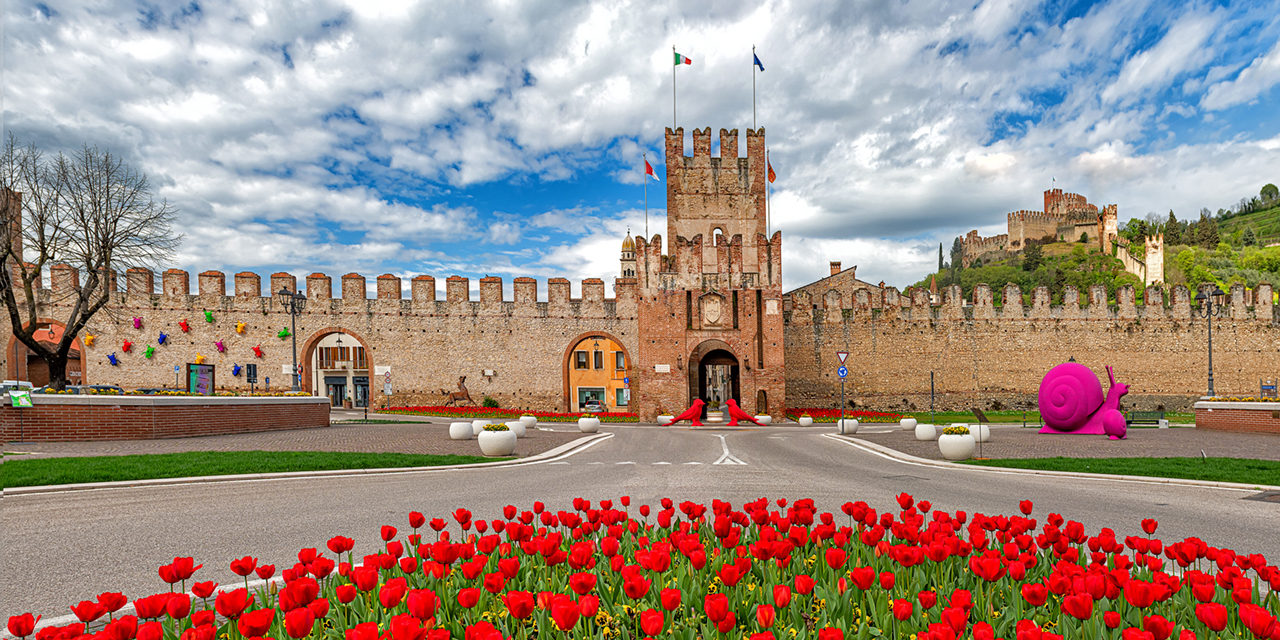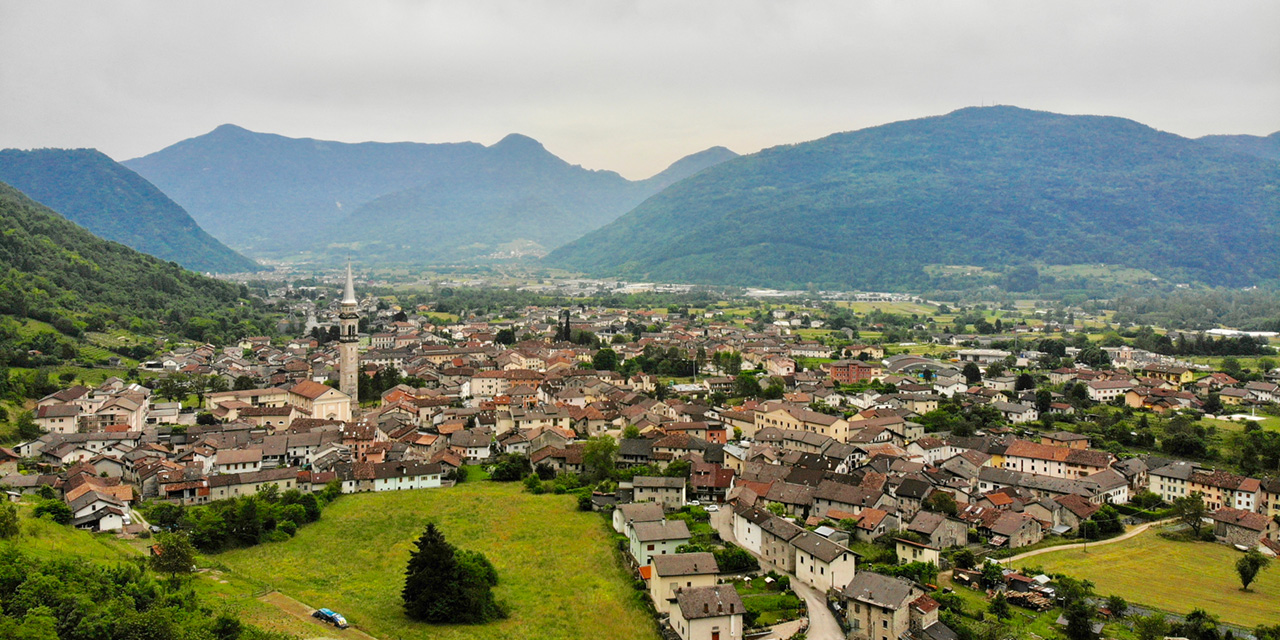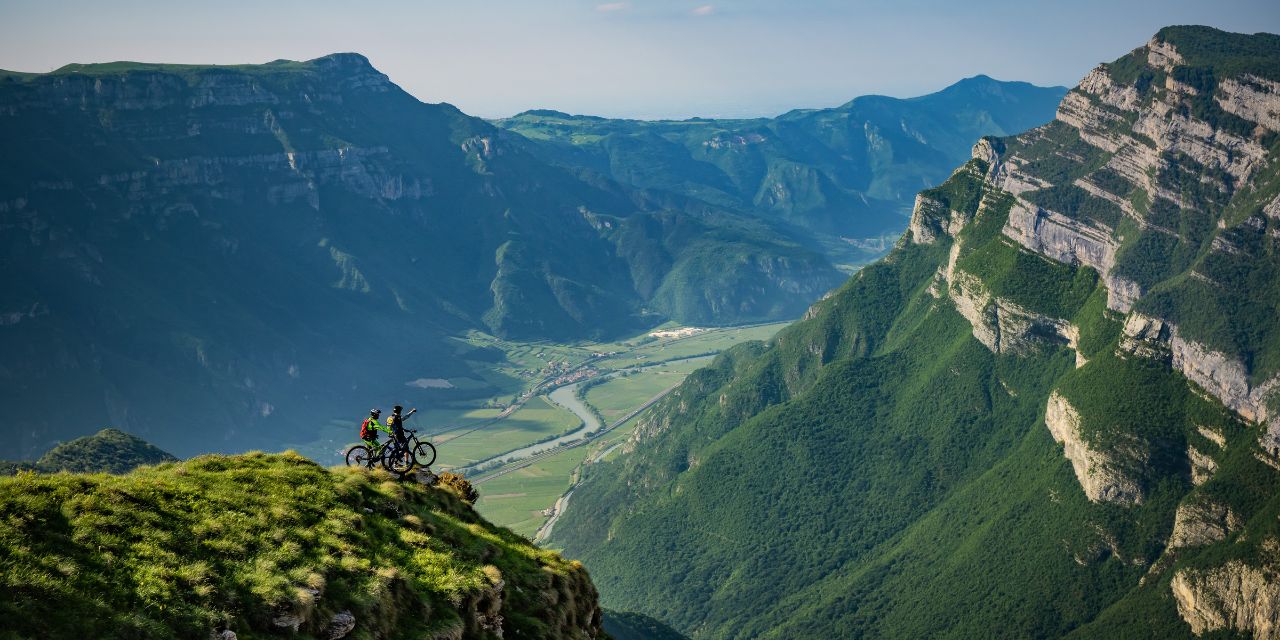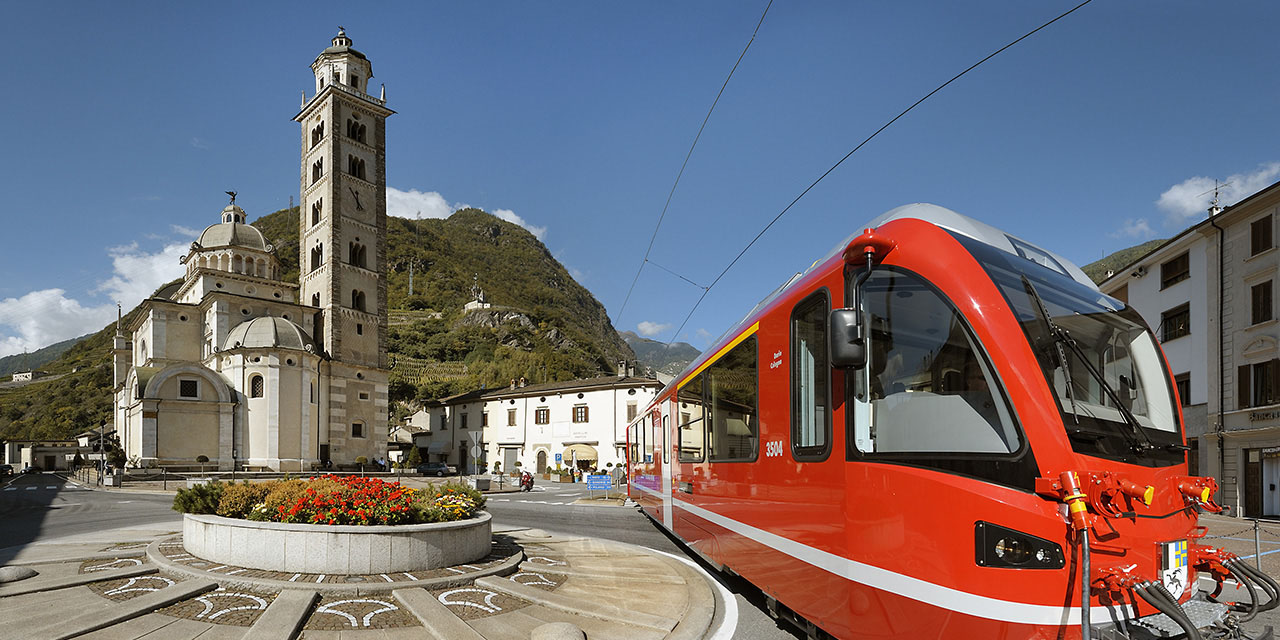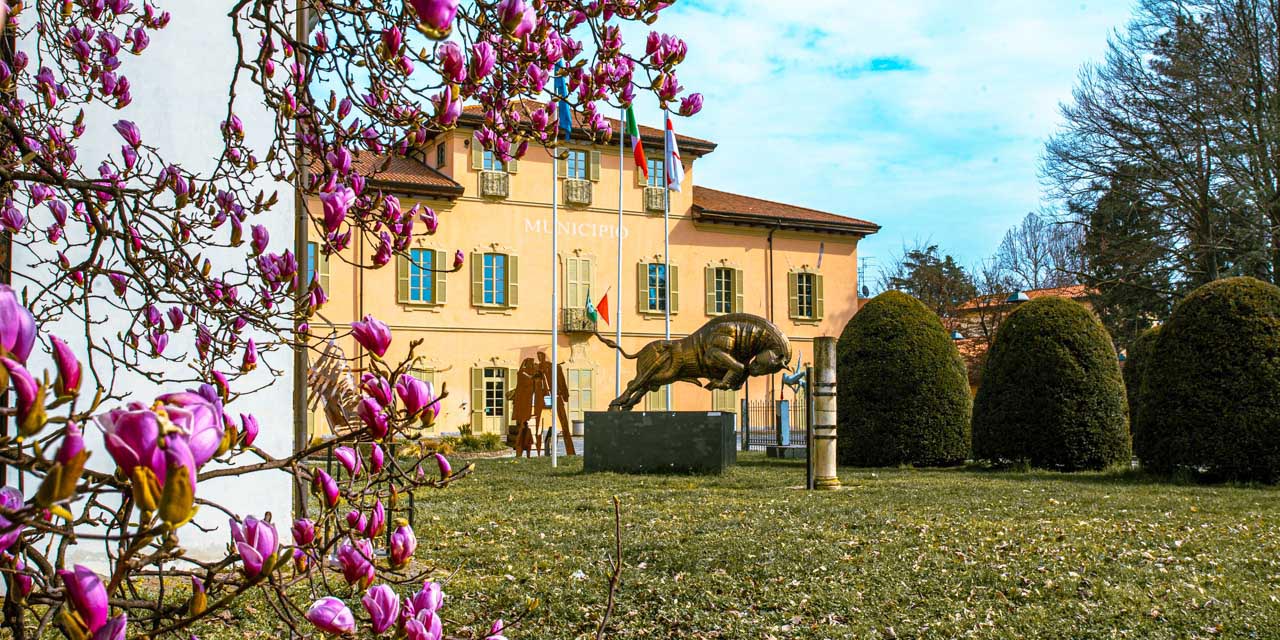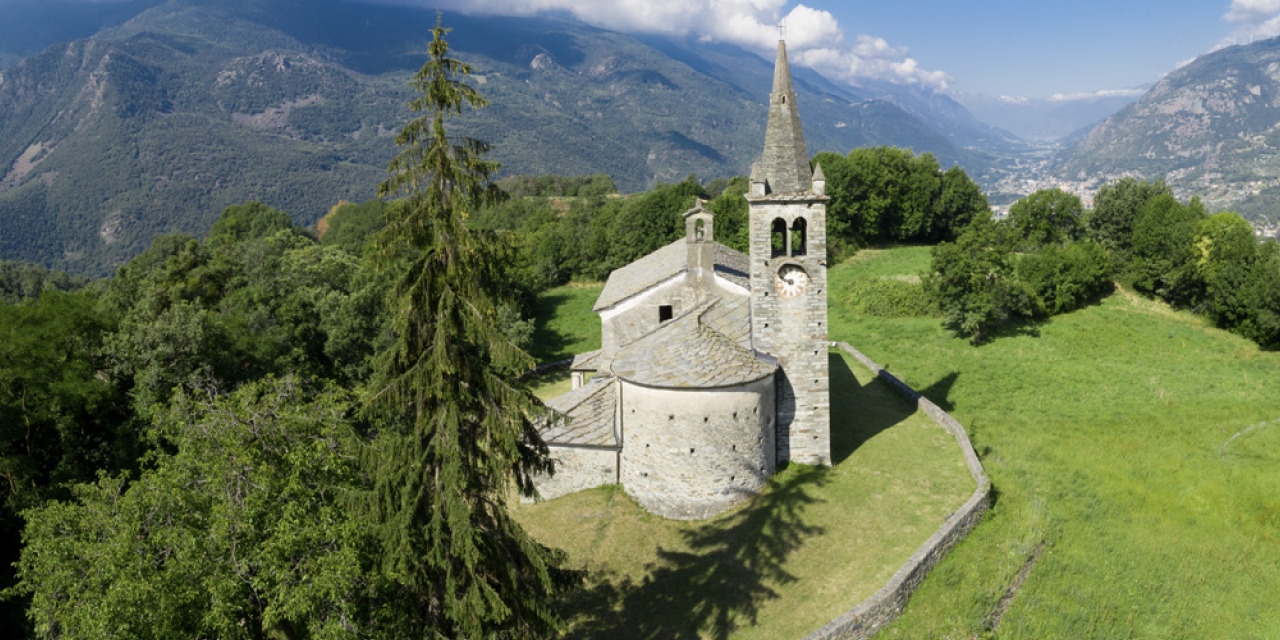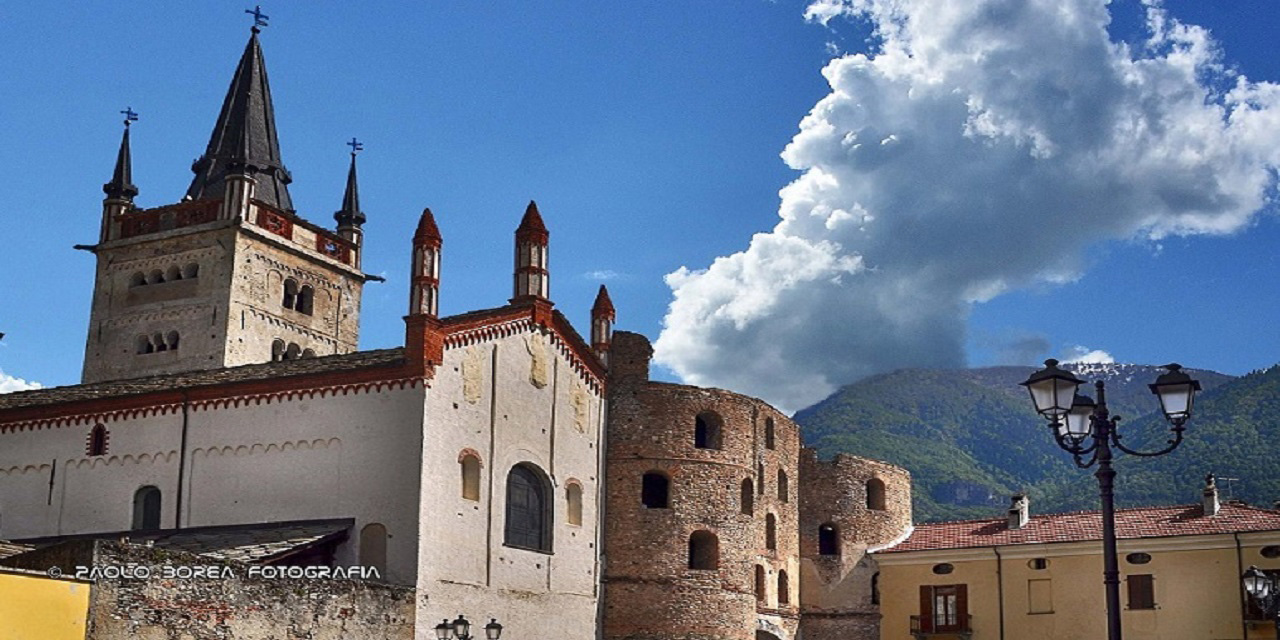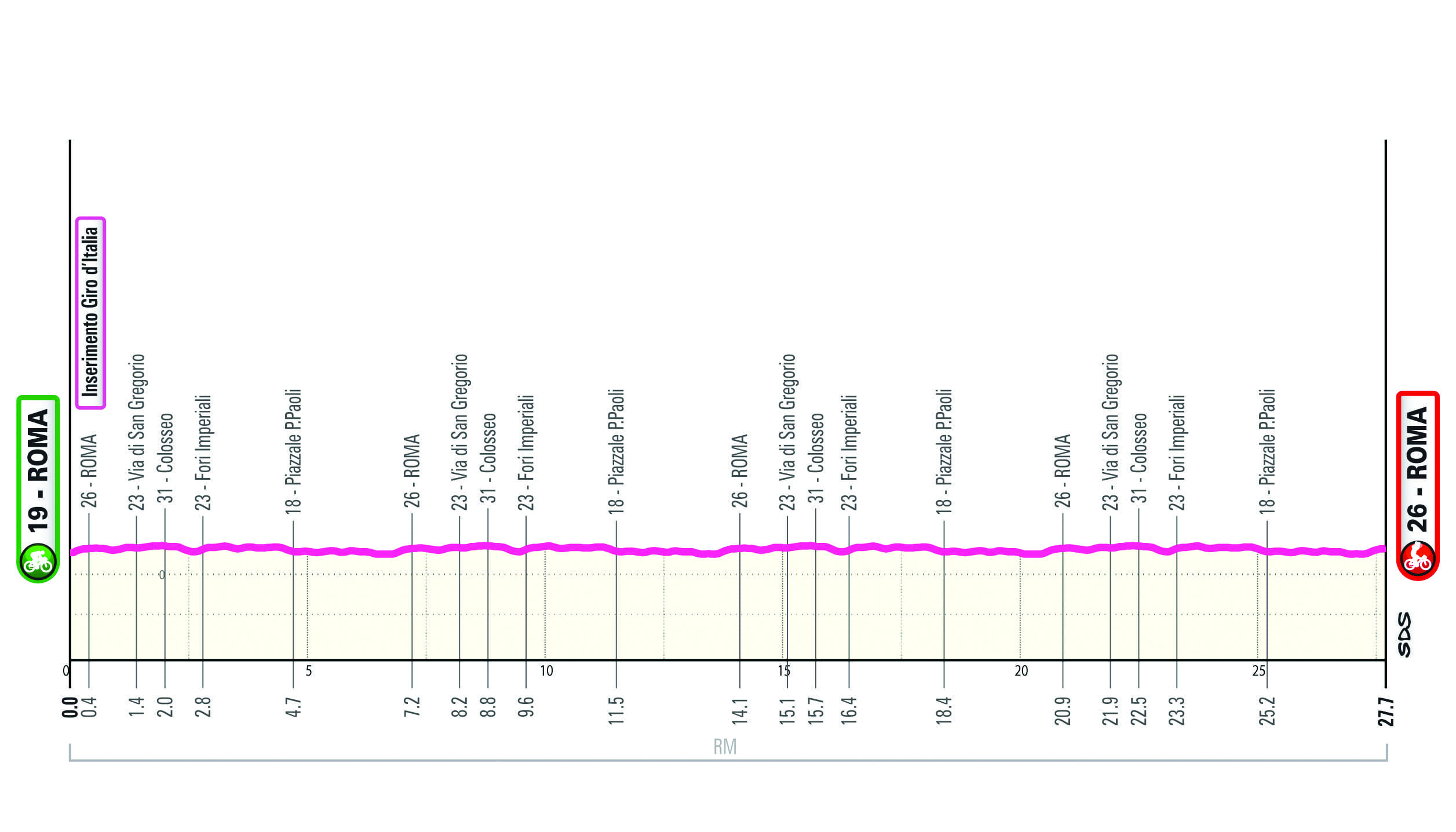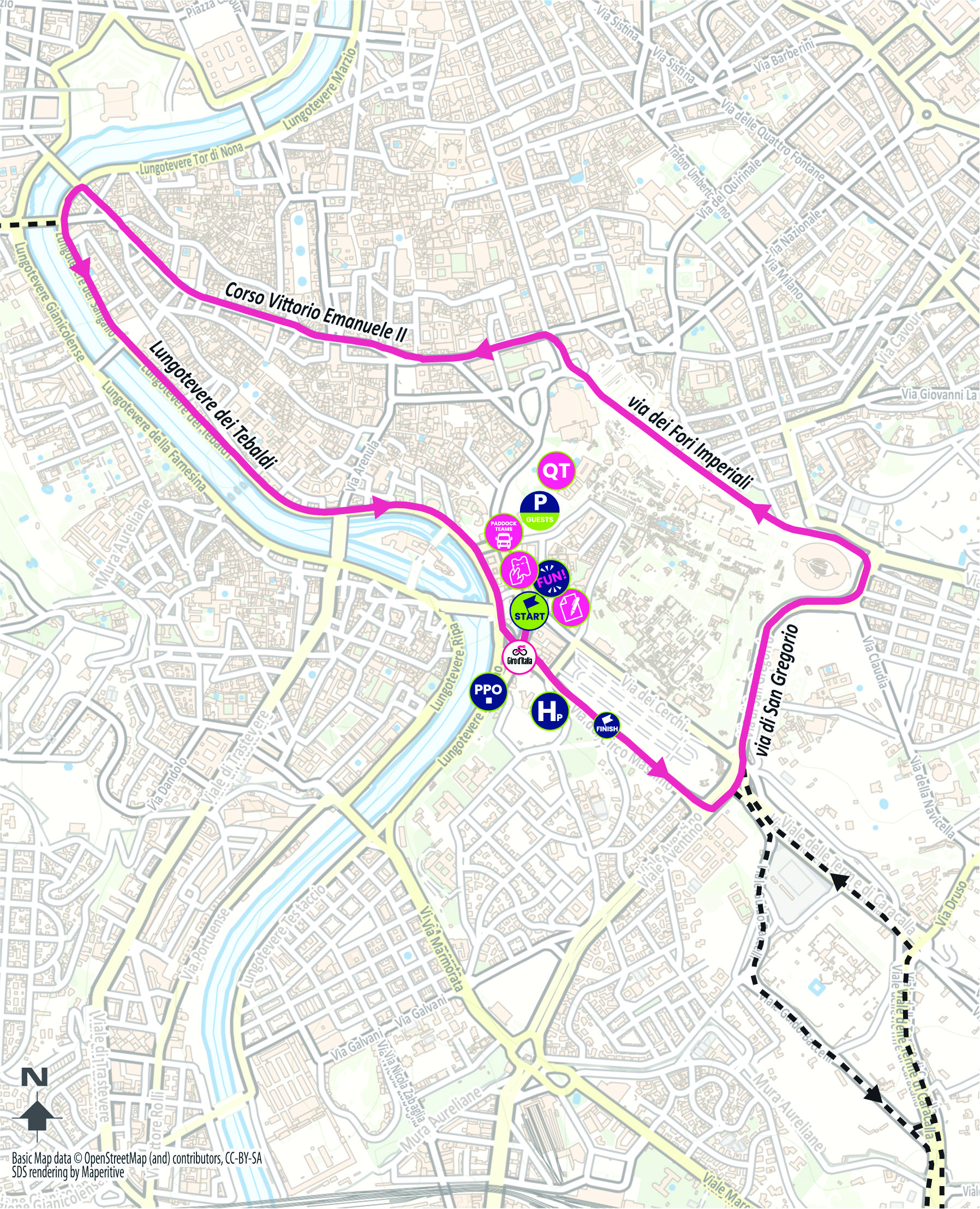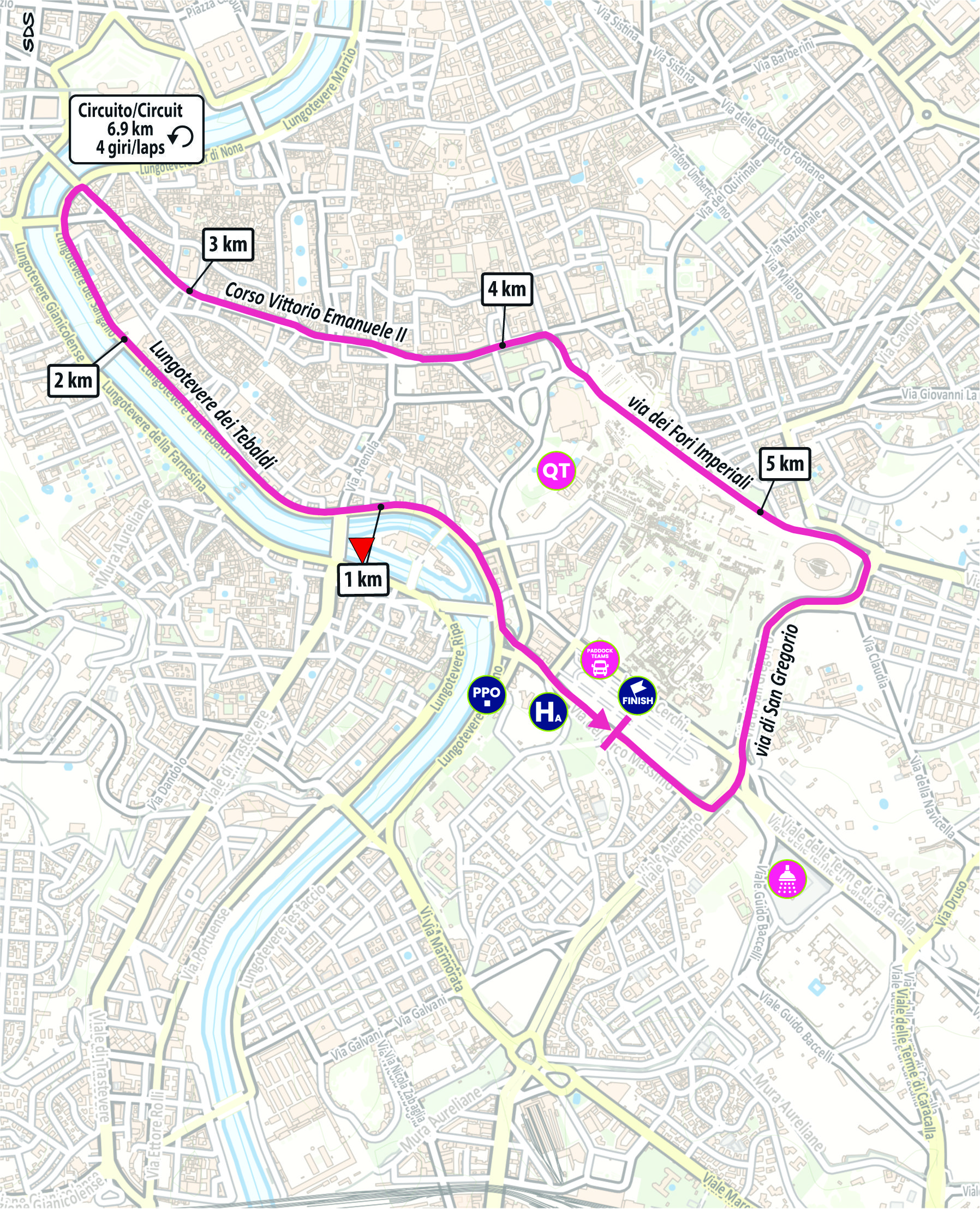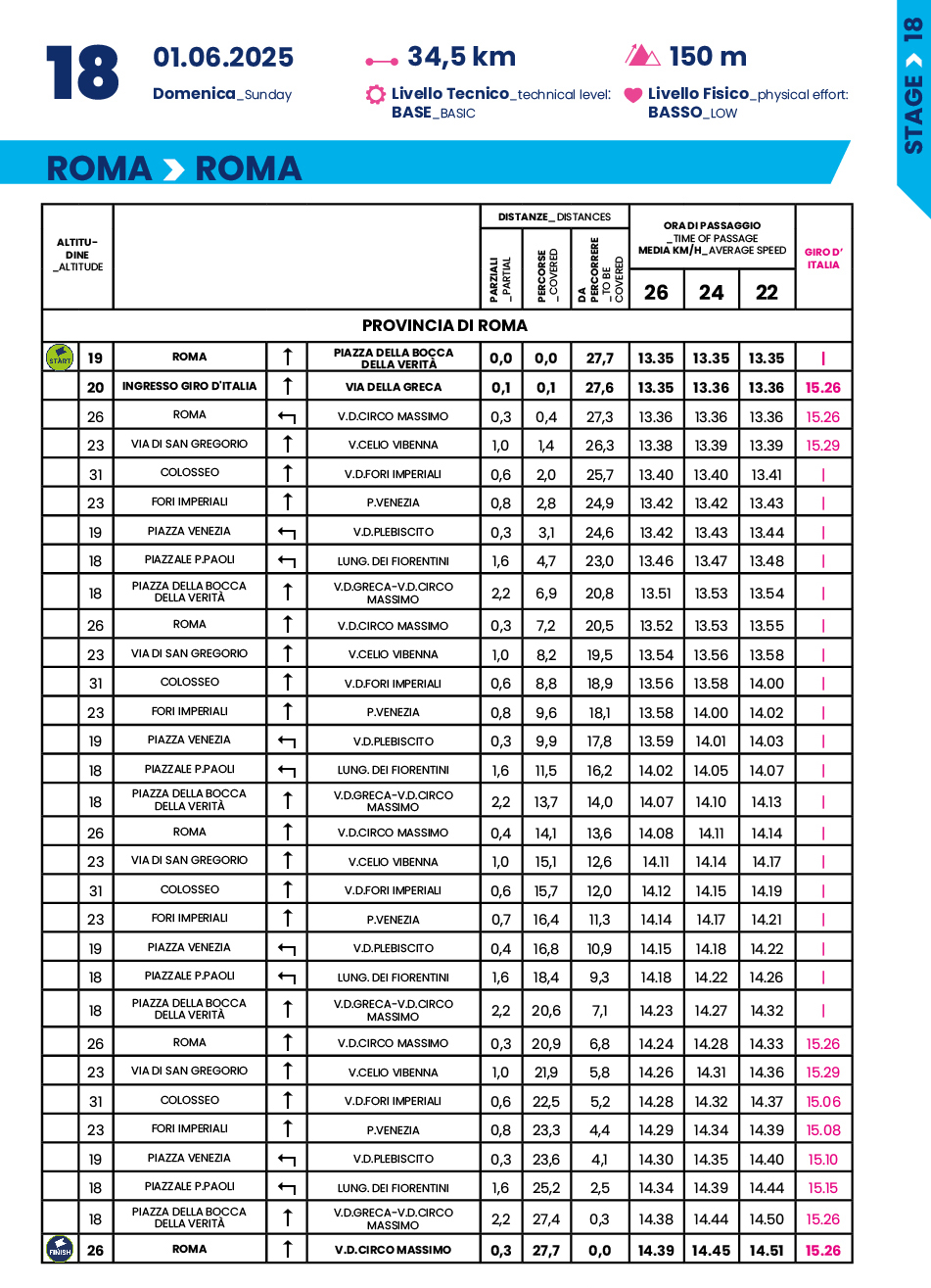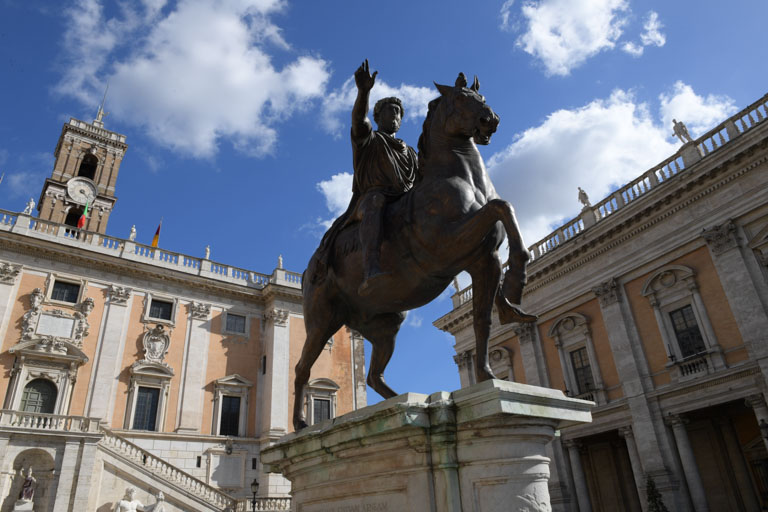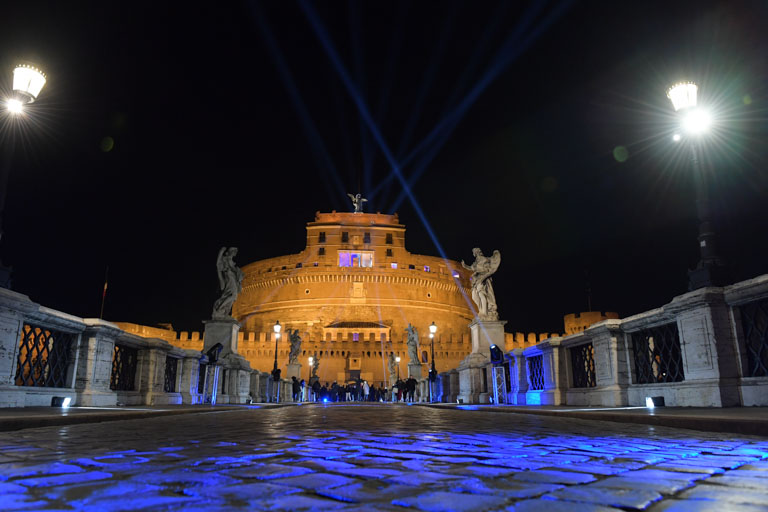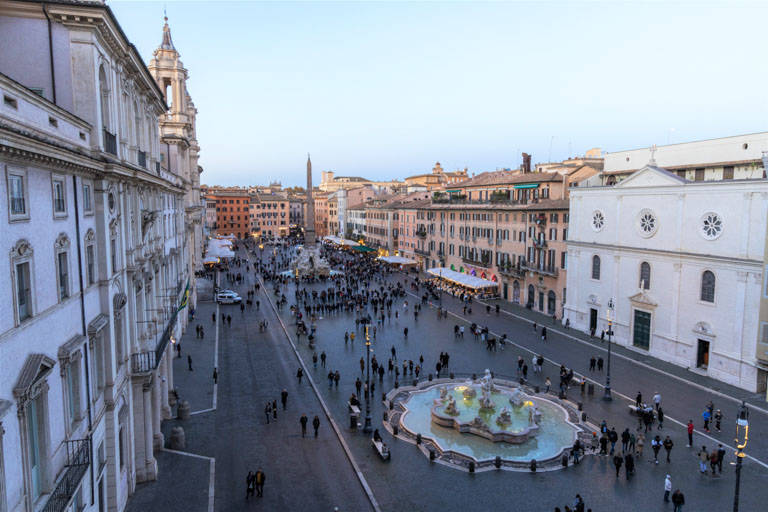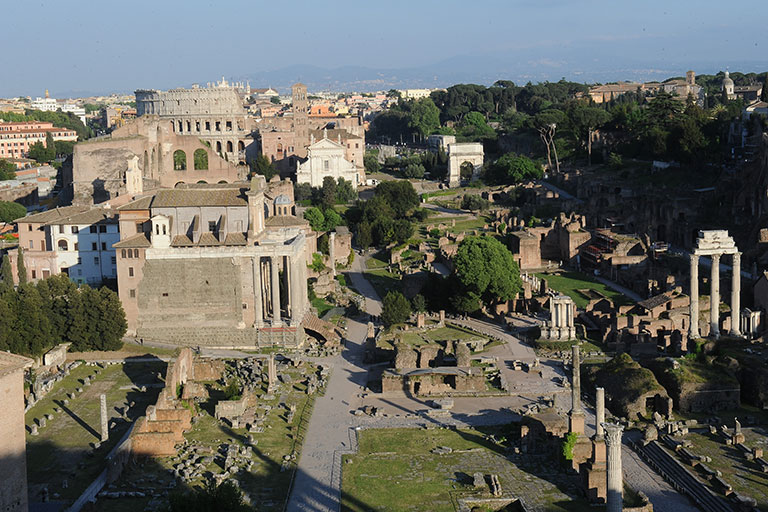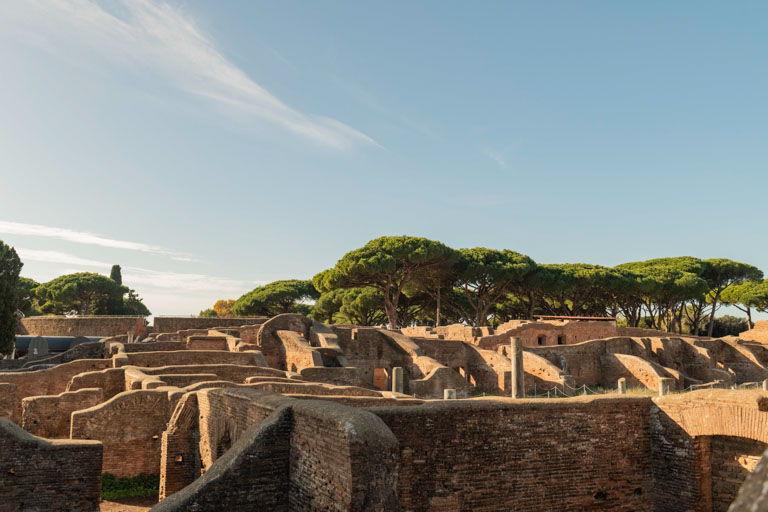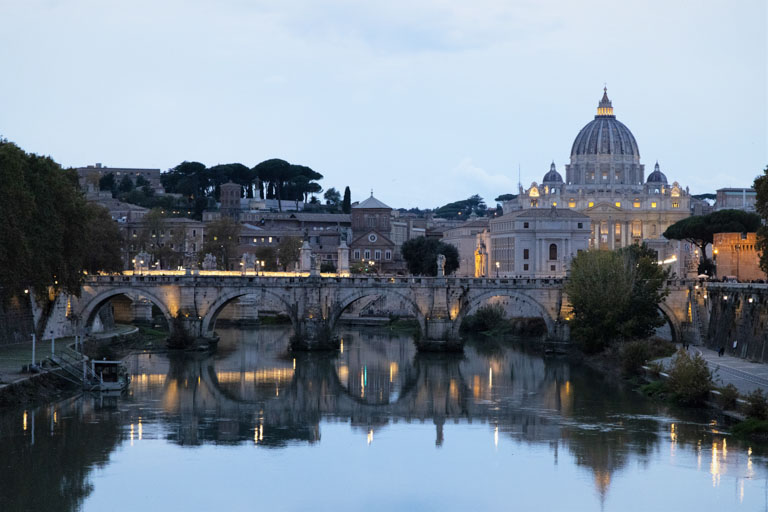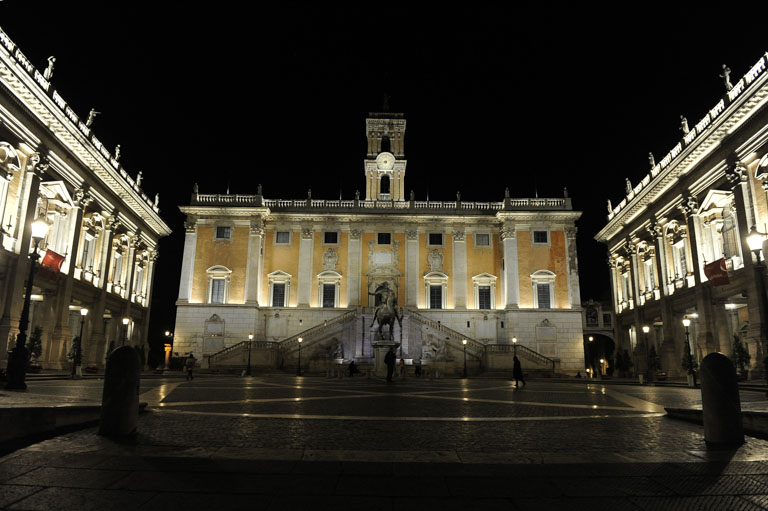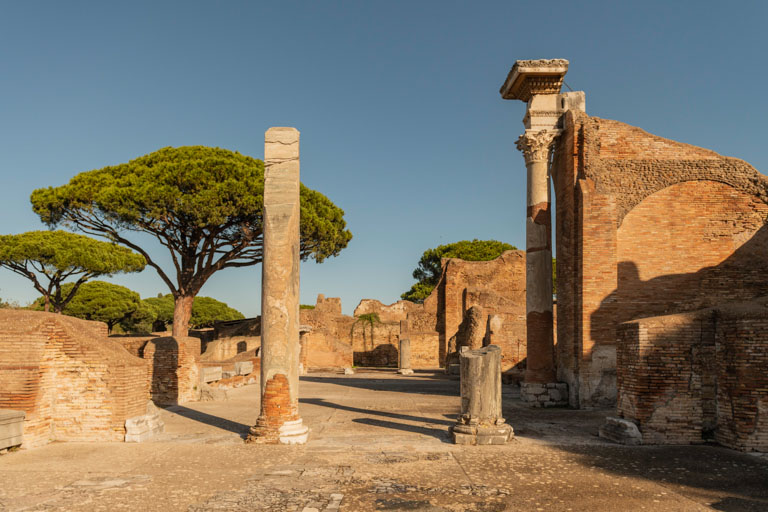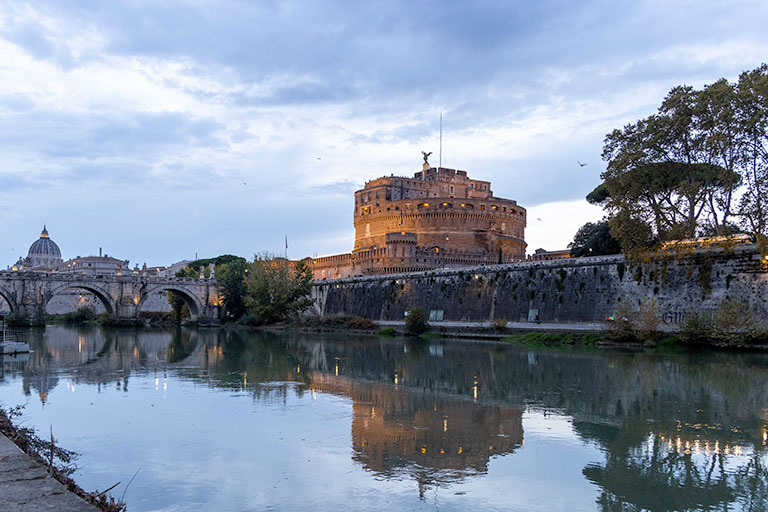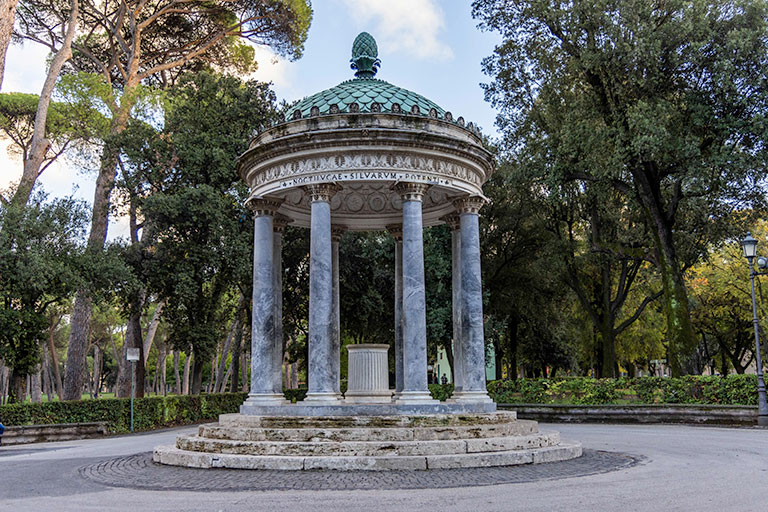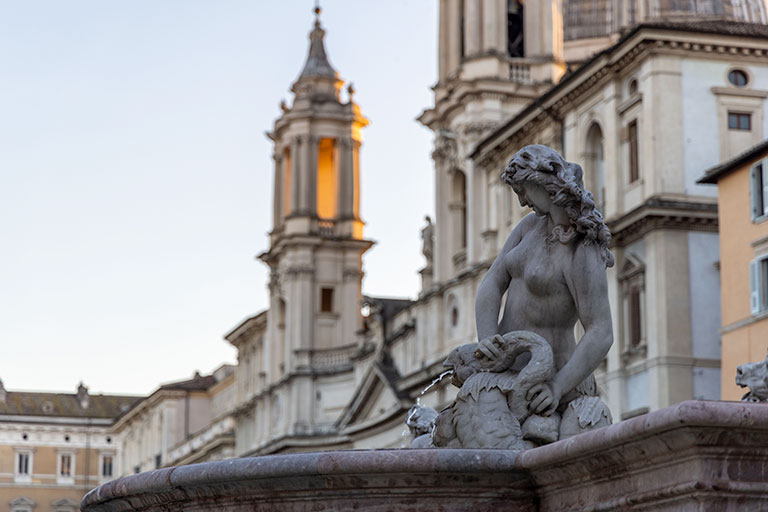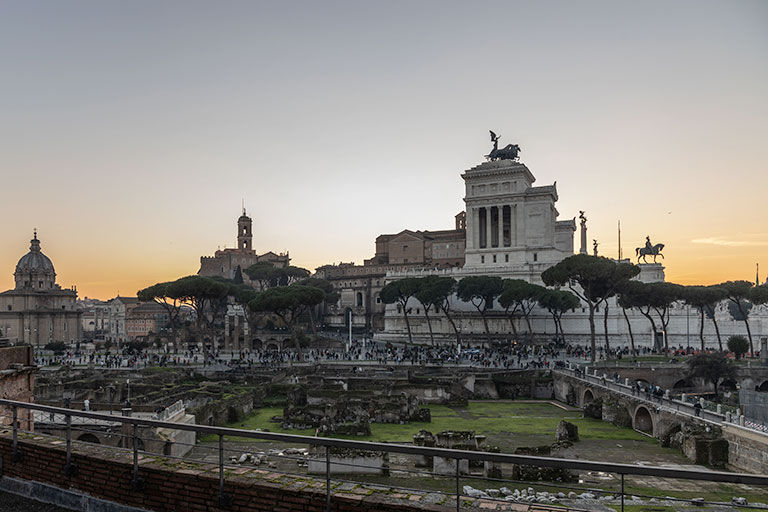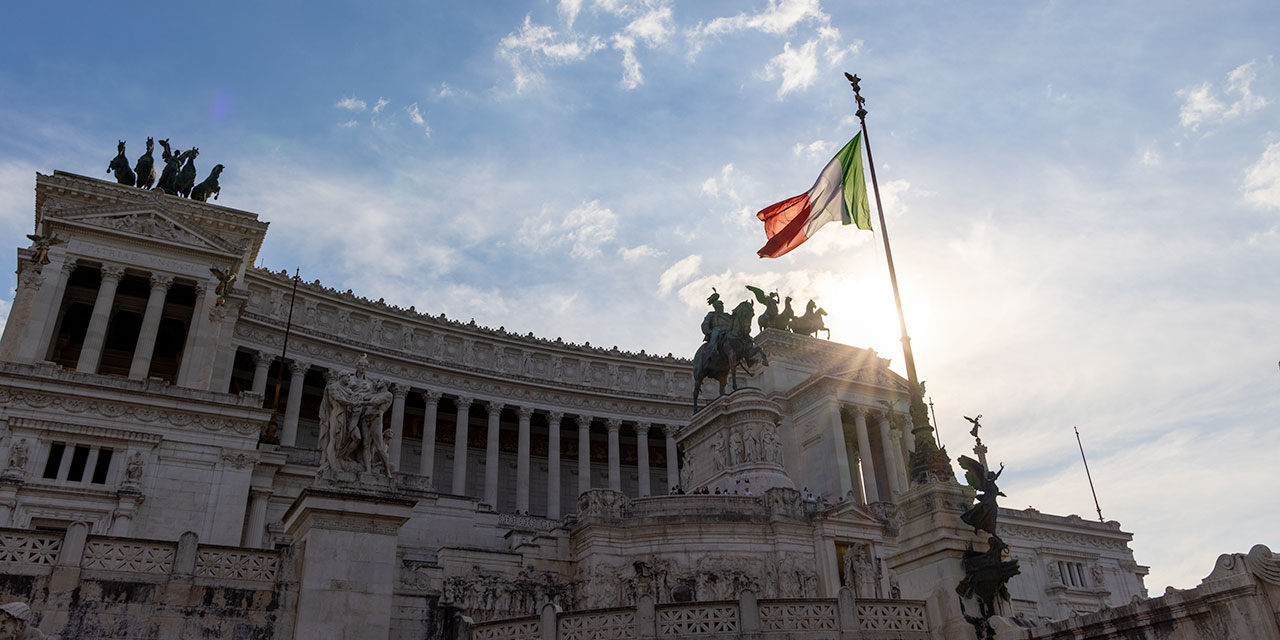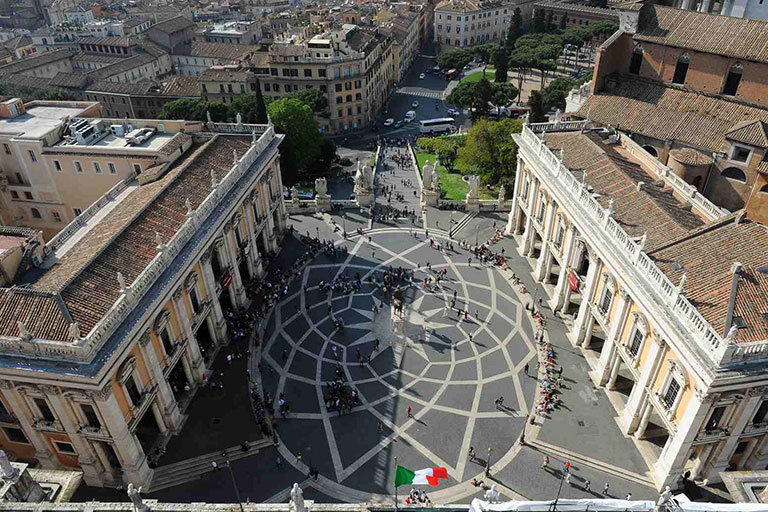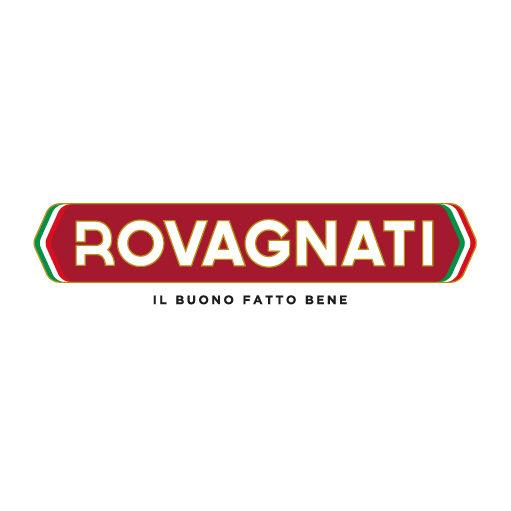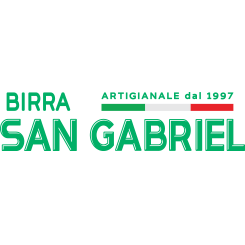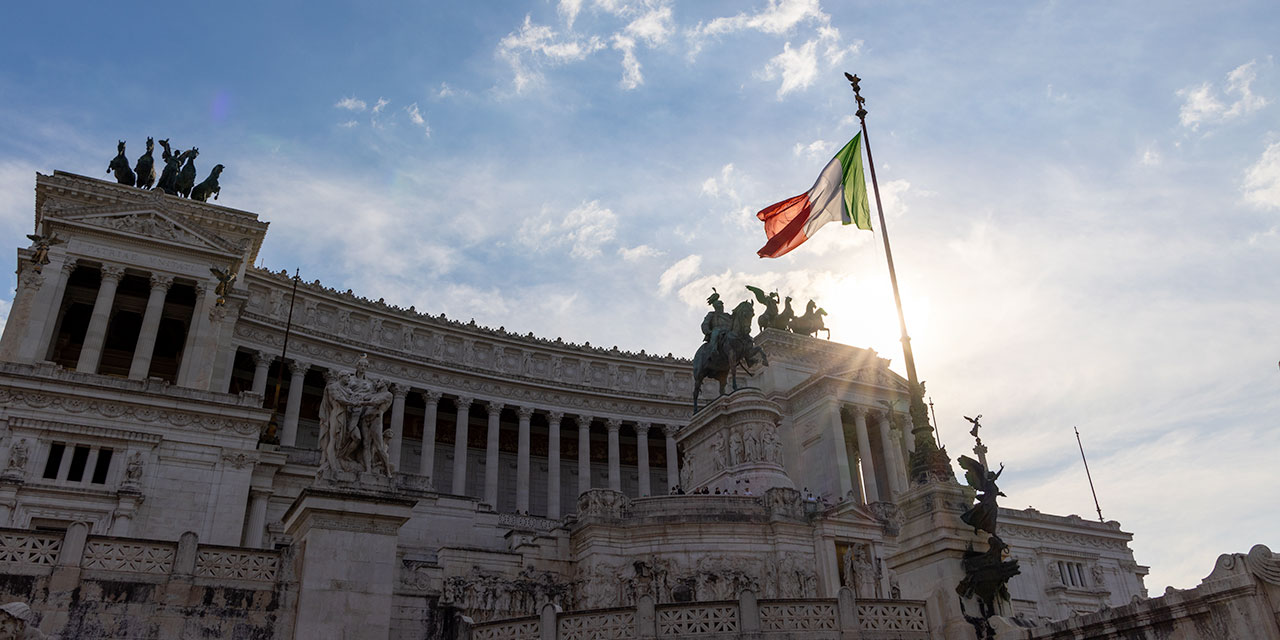
Tappa
18
Domenica 1
Giugno 2025
27,7 km
Dislivello 150 mt
Livello Tecnico: Base
Impegno Fisico: Basso

Roma -
Roma
Roma - Roma
info turistiche
Città di:
Roma
Overview
The grand finale of the race takes place in Rome, the Eternal City. With its unparalleled historical and cultural heritage, the Italian Capital is home to world-famous landmarks such as the Colosseum, the Vatican, and the Pantheon. Its charming streets, vibrant piazzas, and rich cuisine make it one of the most fascinating cities in the world. The race’s conclusion in Rome adds a legendary finish to this spectacular journey through the world’s most beautiful country.
Gastronomy
Food Trail in Roman districts
Rome is a metropolis that enchants with its millenary history. Exploring the Eternal City beautiful sites is also a journey through the many culinary specialities that you can taste anywhere in the Capital. If you want to discover its true essence, all you have to do is taste the traditional Roman cuisine, recipes that reflect its history, made with simple and often humble ingredients.
If “life is a combination of magic and pasta”, as Federico Fellini said, the right way to experience tastes, colours and aromas, is walking along the streets and alleys of Rome. Here you can discover rustic dishes but with intense flavours. It is the cuisine of the real Romans, people who have always lived in the old city streets and squares, livening up the numerous inns and taverns.
Our food trails wind also their way through “working-class” neighbourhoods, where the tradition is still alive. Districts like Trastevere and Testaccio, quite central, and Garbatella, San Lorenzo, and Ostiense, slightly further out, teem with trattorias. In the evening, they become a popular destination to find historic inns and restaurants that rarely give in to the fashion of re-inventing traditional dishes. Here, the smell of food merges with suggestions from the past when Carbonari, artisans, and commoners fought to survive – within spitting distance of some of Rome’s finest villas and palaces.
Then, this is Rome – a mixture of refined nobility and genuine people accustomed to surviving with their real condition and the evocative power of a city for centuries the capital of the world. People who have maintained their most authentic identity even in the transmission of culinary tradition. It’s not by chance that the place of honour, amongst genuine and traditional Roman dishes, belongs to the so-called fifth quarter, the offal and less valuable parts of beef and lamb/mutton – never selected for the tables of the wealthiest classes. We’re talking about tripe, kidneys, heart, livers, spleen, sweetbreads and backs (spinal cord), brains, tongue and tail, or “coratella” – liver, lungs, and heart cooked together.
These simple ingredients give life to extraordinary dishes in taste and delicacy that caress the palate despite their humble origins. Rigatoni with pajata (pasta with intestines of unweaned calves) or kidneys,”coratella” with artichokes or onions, Roman-style tripe, “coda alla vaccinara” (oxtail), “stufatino alla romana” (stew), and “saltimbocca” are just some of the delicacies of the Capitoline cuisine. Two age-old local dishes you still find in Roman trattorias both use cheap cuts of beef: the stewed spleen, flavoured with sage, garlic, vinegar, anchovies, and pepper, and kidneys cooked with tomatoes, onion sauce, parsley, white wine, and pepper.
Wine and beverage
Roman cuisine, with its bold and intense flavors, pairs perfectly with Lazio’s wines, a region with a long winemaking tradition dating back to the Etruscans and ancient Romans. The hilly terrain, mild climate, and volcanic soil give Lazio wines their distinctive character, from fresh and mineral whites to structured and long-lasting reds.
Among the most renowned white wines is Frascati Superiore DOCG, produced in the Castelli Romani area. Made from a blend of Malvasia del Lazio, Trebbiano, and Greco, it features fruity aromas and a fresh, savory taste, making it the perfect match for Roman fried delicacies such as supplì, baccalà, and stuffed zucchini flowers.
Another iconic white is Malvasia del Lazio, an aromatic and smooth varietal with floral notes of peach and citrus, ideally paired with Cacio e Pepe and Puntarelle alla Romana to enhance their flavors. Equally notable is Est! Est!! Est!!! di Montefiascone DOC, with a balanced and slightly fruity profile, perfect for light appetizers, fresh cheeses, and classic Roman pastas like Gricia.
On the red side, Cesanese del Piglio DOCG is the most famous and representative of Lazio. This native grape produces wines with an intense ruby color, structured body, and notes of red fruit and spices. It pairs beautifully with Rome’s heartiest dishes, such as Coda alla Vaccinara, Pajata, and Pollo alla Romana.
Another noteworthy red is Nero Buono di Cori, a lesser-known but high-quality varietal. With its velvety, cherry- and spice-infused flavor, it complements Saltimbocca alla Romana and roasted meats perfectly. Lazio’s Bordeaux-style blends, made from Cabernet Sauvignon, Merlot, and Sangiovese, are elegant and structured, ideal for grilled meats and aged cheeses like pecorino romano.
For dessert pairings, Lazio’s sweet wines offer a range of options. Cannellino di Frascati DOCG, the sweet version of Frascati, is perfect with Maritozzo con la Panna and almond-studded tozzetti, thanks to its smooth and enveloping taste. Another beloved dessert wine is Aleatico di Gradoli DOC, an aromatic passito with notes of rose and red fruit, an excellent match for chocolate desserts and sour cherry tarts.
Beyond wine, Rome boasts a tradition of liqueurs and digestifs that complete the meal in true Roman style. The most famous is Sambuca Romana, an anise-flavored liqueur enjoyed neat, on the rocks, or “con la mosca”—with a toasted coffee bean to enhance its aroma. Amaro del Capo, an herbal and citrusy digestif, is often served ice-cold after a hearty meal, as is Ratafià, a sweet liqueur made from sour cherries or morello cherries. For those who prefer stronger flavors, Lazio’s Grappa, distilled from local grape pomace, is the perfect way to end a meal with warmth and intensity.
Points of interest
Rome, the Eternal City, is an open-air museum where every corner tells a story spanning centuries of history, art, and culture. From the grandeur of the Roman Empire to the splendor of the Renaissance and Baroque eras, Italy’s capital boasts an unparalleled wealth of monuments, squares, churches, and breathtaking views that captivate millions of visitors each year.
The Colosseum, Rome’s most iconic landmark, is the world’s largest amphitheater and one of the most visited archaeological sites. Built in the 1st century AD, it hosted gladiator fights and naval battles. Nearby, the Imperial Forums were the political, economic, and religious heart of ancient Rome. Strolling through the ruins of the Roman Forum, with its temples and triumphal arches, brings the greatness of the Empire to life.
A short walk away, the Circus Maximus, the ancient chariot-racing stadium, once held up to 250,000 spectators. Today, it serves as a venue for concerts and events, offering a scenic view of the Palatine Hill, where legend says Romulus founded Rome in 753 BC.
Other must-see landmarks include St. Peter’s Basilica, the Vatican Museums, the Pantheon, Piazza Navona, the Trevi Fountain, the Spanish Steps, Villa Borghese, the Appian Way, and Trastevere’s cobbled streets—all part of a city where history and beauty come alive at every turn.
Roma
Overview
The grand finale of the race takes place in Rome, the Eternal City. With its unparalleled historical and cultural heritage, the Italian Capital is home to world-famous landmarks such as the Colosseum, the Vatican, and the Pantheon. Its charming streets, vibrant piazzas, and rich cuisine make it one of the most fascinating cities in the world. The race’s conclusion in Rome adds a legendary finish to this spectacular journey through the world’s most beautiful country.
Gastronomy
Food Trail in Roman districts
Rome is a metropolis that enchants with its millenary history. Exploring the Eternal City beautiful sites is also a journey through the many culinary specialities that you can taste anywhere in the Capital. If you want to discover its true essence, all you have to do is taste the traditional Roman cuisine, recipes that reflect its history, made with simple and often humble ingredients.
If “life is a combination of magic and pasta”, as Federico Fellini said, the right way to experience tastes, colours and aromas, is walking along the streets and alleys of Rome. Here you can discover rustic dishes but with intense flavours. It is the cuisine of the real Romans, people who have always lived in the old city streets and squares, livening up the numerous inns and taverns.
Our food trails wind also their way through “working-class” neighbourhoods, where the tradition is still alive. Districts like Trastevere and Testaccio, quite central, and Garbatella, San Lorenzo, and Ostiense, slightly further out, teem with trattorias. In the evening, they become a popular destination to find historic inns and restaurants that rarely give in to the fashion of re-inventing traditional dishes. Here, the smell of food merges with suggestions from the past when Carbonari, artisans, and commoners fought to survive – within spitting distance of some of Rome’s finest villas and palaces.
Then, this is Rome – a mixture of refined nobility and genuine people accustomed to surviving with their real condition and the evocative power of a city for centuries the capital of the world. People who have maintained their most authentic identity even in the transmission of culinary tradition. It’s not by chance that the place of honour, amongst genuine and traditional Roman dishes, belongs to the so-called fifth quarter, the offal and less valuable parts of beef and lamb/mutton – never selected for the tables of the wealthiest classes. We’re talking about tripe, kidneys, heart, livers, spleen, sweetbreads and backs (spinal cord), brains, tongue and tail, or “coratella” – liver, lungs, and heart cooked together.
These simple ingredients give life to extraordinary dishes in taste and delicacy that caress the palate despite their humble origins. Rigatoni with pajata (pasta with intestines of unweaned calves) or kidneys,”coratella” with artichokes or onions, Roman-style tripe, “coda alla vaccinara” (oxtail), “stufatino alla romana” (stew), and “saltimbocca” are just some of the delicacies of the Capitoline cuisine. Two age-old local dishes you still find in Roman trattorias both use cheap cuts of beef: the stewed spleen, flavoured with sage, garlic, vinegar, anchovies, and pepper, and kidneys cooked with tomatoes, onion sauce, parsley, white wine, and pepper.
Wine and beverage
Roman cuisine, with its bold and intense flavors, pairs perfectly with Lazio’s wines, a region with a long winemaking tradition dating back to the Etruscans and ancient Romans. The hilly terrain, mild climate, and volcanic soil give Lazio wines their distinctive character, from fresh and mineral whites to structured and long-lasting reds.
Among the most renowned white wines is Frascati Superiore DOCG, produced in the Castelli Romani area. Made from a blend of Malvasia del Lazio, Trebbiano, and Greco, it features fruity aromas and a fresh, savory taste, making it the perfect match for Roman fried delicacies such as supplì, baccalà, and stuffed zucchini flowers.
Another iconic white is Malvasia del Lazio, an aromatic and smooth varietal with floral notes of peach and citrus, ideally paired with Cacio e Pepe and Puntarelle alla Romana to enhance their flavors. Equally notable is Est! Est!! Est!!! di Montefiascone DOC, with a balanced and slightly fruity profile, perfect for light appetizers, fresh cheeses, and classic Roman pastas like Gricia.
On the red side, Cesanese del Piglio DOCG is the most famous and representative of Lazio. This native grape produces wines with an intense ruby color, structured body, and notes of red fruit and spices. It pairs beautifully with Rome’s heartiest dishes, such as Coda alla Vaccinara, Pajata, and Pollo alla Romana.
Another noteworthy red is Nero Buono di Cori, a lesser-known but high-quality varietal. With its velvety, cherry- and spice-infused flavor, it complements Saltimbocca alla Romana and roasted meats perfectly. Lazio’s Bordeaux-style blends, made from Cabernet Sauvignon, Merlot, and Sangiovese, are elegant and structured, ideal for grilled meats and aged cheeses like pecorino romano.
For dessert pairings, Lazio’s sweet wines offer a range of options. Cannellino di Frascati DOCG, the sweet version of Frascati, is perfect with Maritozzo con la Panna and almond-studded tozzetti, thanks to its smooth and enveloping taste. Another beloved dessert wine is Aleatico di Gradoli DOC, an aromatic passito with notes of rose and red fruit, an excellent match for chocolate desserts and sour cherry tarts.
Beyond wine, Rome boasts a tradition of liqueurs and digestifs that complete the meal in true Roman style. The most famous is Sambuca Romana, an anise-flavored liqueur enjoyed neat, on the rocks, or “con la mosca”—with a toasted coffee bean to enhance its aroma. Amaro del Capo, an herbal and citrusy digestif, is often served ice-cold after a hearty meal, as is Ratafià, a sweet liqueur made from sour cherries or morello cherries. For those who prefer stronger flavors, Lazio’s Grappa, distilled from local grape pomace, is the perfect way to end a meal with warmth and intensity.
Points of interest
Rome, the Eternal City, is an open-air museum where every corner tells a story spanning centuries of history, art, and culture. From the grandeur of the Roman Empire to the splendor of the Renaissance and Baroque eras, Italy’s capital boasts an unparalleled wealth of monuments, squares, churches, and breathtaking views that captivate millions of visitors each year.
The Colosseum, Rome’s most iconic landmark, is the world’s largest amphitheater and one of the most visited archaeological sites. Built in the 1st century AD, it hosted gladiator fights and naval battles. Nearby, the Imperial Forums were the political, economic, and religious heart of ancient Rome. Strolling through the ruins of the Roman Forum, with its temples and triumphal arches, brings the greatness of the Empire to life.
A short walk away, the Circus Maximus, the ancient chariot-racing stadium, once held up to 250,000 spectators. Today, it serves as a venue for concerts and events, offering a scenic view of the Palatine Hill, where legend says Romulus founded Rome in 753 BC.
Other must-see landmarks include St. Peter’s Basilica, the Vatican Museums, the Pantheon, Piazza Navona, the Trevi Fountain, the Spanish Steps, Villa Borghese, the Appian Way, and Trastevere’s cobbled streets—all part of a city where history and beauty come alive at every turn.


